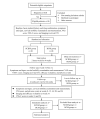Efficacy and Safety of Shi Cervical Rotational Manipulation in Patients With Atlantoaxial Joint Subluxation: Protocol for a Randomized Controlled Trial
- PMID: 39137417
- PMCID: PMC11350302
- DOI: 10.2196/57865
Efficacy and Safety of Shi Cervical Rotational Manipulation in Patients With Atlantoaxial Joint Subluxation: Protocol for a Randomized Controlled Trial
Abstract
Background: The clinical diagnosis of atlantoaxial joint subluxation (AJS) in traditional Chinese medicine (TCM) is characterized by an unequal distance between the lateral mass of the atlas and the odontoid process on imaging, resulting in neck pain accompanied by symptoms such as dizziness, headache, and limited cervical mobility. In Shanghai, Shi cervical rotational manipulation (SCRM) is a commonly employed TCM manual therapy for treating this condition. Nevertheless, there is a lack of evidence-based medical information regarding the clinical efficacy and safety of this technique.
Objective: The principal aim of this study is to evaluate the efficacy and safety of SCRM in patients diagnosed with AJS.
Methods: This study is a prospective randomized controlled clinical trial that will be conducted at a single center and that has a follow-up period of 24 weeks. A total of 96 patients diagnosed with AJS will be recruited from outpatient and inpatient clinics at Shanghai Baoshan Hospital of Integrated Traditional Chinese and Western Medicine. These patients will be randomly assigned to either the experimental group (SCRM) or the comparison group (basic cervical manipulation [BCM]). Treatment sessions consisting of SCRM or BCM will be administered twice a week for a duration of 4 weeks. Clinical monitoring indicators include the presence or absence of clinical symptoms as recorded on a symptom recording form, cervical imaging examination findings using cervical computed tomography, degree of neck pain measured by a visual analog scale (VAS), cervical range of motion assessed through cervical mobility measurement, degree of vertigo evaluated using the Vertigo Symptoms Scale-Chinese Version (VSS-C), and adverse events that may occur during the follow-up period. The time points for data collection and follow-up are baseline and postintervention (weeks 4, 8, 12, 16, 20, and 24).
Results: This paper presents an overview of the reasoning and structure of a prospective randomized controlled trial with the objective of investigating the clinical efficacy and safety of SCRM in patients with AJS by assessing improvements in clinical symptoms, neck pain severity, and vertigo severity and evaluating changes in cervical imaging findings. Recruitment was started in March 2023. By the end of May 2024, 76 patients were included in this project. The last follow-up data are predicted to be collected by the end of February 2025.
Conclusions: This investigation will yield dependable evidence regarding the efficacy and safety of SCRM in patients with AJS.
Trial registration: Chinese Clinical Trial Registry ChiCTR2300068510; https://www.chictr.org.cn/showprojEN.html?proj=186883.
International registered report identifier (irrid): DERR1-10.2196/57865.
Keywords: Shi cervical rotational manipulation; atlantoaxial joint subluxation; efficacy; randomized controlled trial; safety.
©Deng Zhen, Shang Haibin, Ai Youli, Yuan Weian, Wang Huihao, Zhan Hongsheng, Li Guozhong, Ding Ren, Shen Zhibi. Originally published in JMIR Research Protocols (https://www.researchprotocols.org), 13.08.2024.
Conflict of interest statement
Conflicts of Interest: None declared.
Figures


References
-
- Zhang M, Shi Y, Huang S, Chen D, Chen B, Wang X, Wang H, Zhang K, Guo K, Zhan H. [Study on the correlation between "Gucuofeng and Jinchucao" and cervical spondylosis] Zhongguo Gu Shang. 2013 Jul;26(7):557–60. - PubMed
-
- ICD-11 for Mortality and Morbidity Statistics. World Health Organization. [2020-09-18]. https://icd.who.int/browse/2024-01/mms/en .
-
- Yuan W, Zhang M, Zhan H. [Understanding and diagnosis of "Gu Cuo Feng and Jin Chu Cao] Zhongguo Gu Shang. 2013 Jun;26(6):502–4. - PubMed
-
- Zhang K, Zhuang Y, Zhan H, Zhang M, Shi Y. [Clinical application of non-collinear spinous process in the diagnosis of cervical vertebra "Gu Cuo Feng and Jin Chu Cao"] Zhongguo Gu Shang. 2013 Jan;26(1):47–9. - PubMed
Publication types
MeSH terms
LinkOut - more resources
Full Text Sources
Medical
Research Materials

